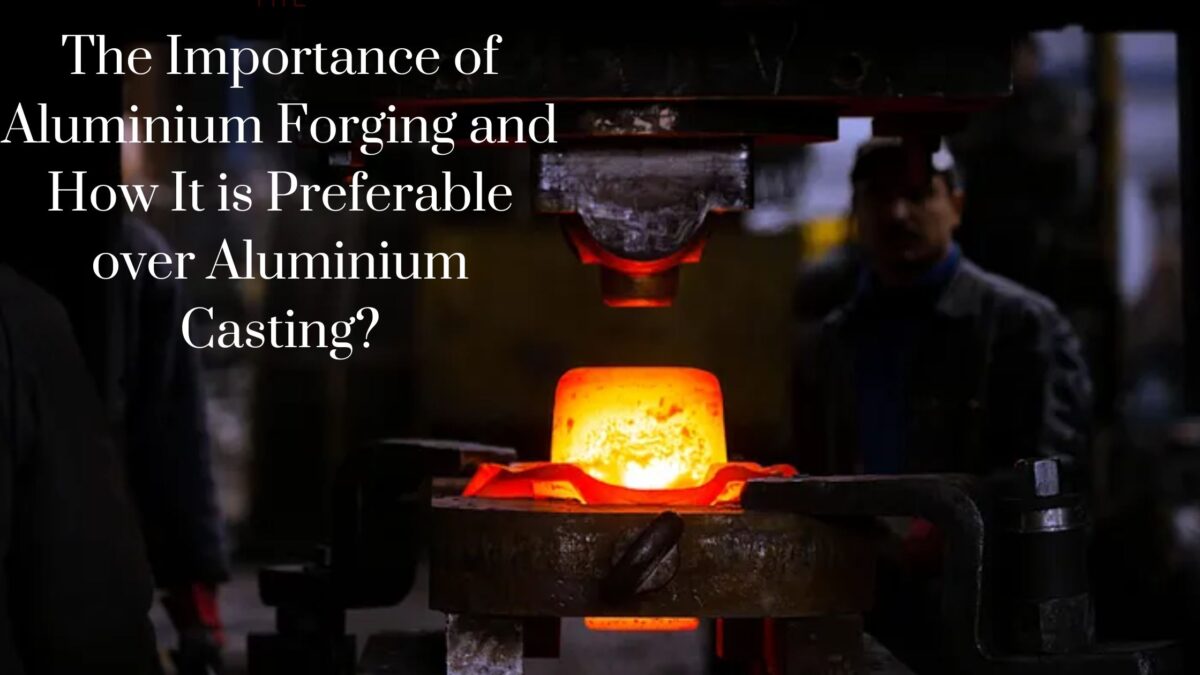The Importance of Aluminium Forging and How It is Preferable over Aluminium Casting

A manufacturing procedure that employs high strength material and apply intense pressure over it to create a sturdy, low-cost material is called forging. Aluminium forging manufacturers employ this method for enhanced energy, efficiency, and speed. It is different from casting. In this article, we will understand the importance of this procedure and how it is effective over casting.
Aluminium Forging- What is it?
The method of forging aluminium is fascinating because to its capacity to shape robust parts that are essential in various industries. Since it is the most abundant metal on the globe, lightweight, pliable, and extremely robust, aluminium is the metal most used for forging. Almost all industries are built on the ability of aluminium alloys to change into precise shapes through the application of stress and heat retention. Industries such as automotive, aerospace, defence, consumer products, bike frame components, sports equipment, and premium cookware use aluminium forging.
Advantages of Aluminium Forging
- Aluminium is more robust- One of the metals that is most readily available on Earth is aluminium. This metal shows mechanical qualities when heated and subsequently forged. Forging aluminium makes it possible to achieve good strength while maintaining lightweight. Because of this, aluminium forging is made in a way that offers the ideal grain structure for a variety of applications.
- Forging aluminium is an affordable option- Aluminium forgings have lower tooling costs and better production rates. This leads to a wide variety of aluminium forgings being utilized in all highly pressurized applications.
- Adaptability in the design- It should be recognized that aluminium cannot be forged into every shape; this is not like casting. It is crucial to examine and analyse the creation of the suggested design while thinking about the aluminium forging process. Throughout the history of aluminium forging, “open die” forgings—which are quite large—have been employed in a variety of sectors, including the aircraft industry.
- Flawless finish- With the items made of aluminium forgings, you can create a range of surface finishes. This covers both slick and sharp dents as well as smooth surfaces. Certain variations possess anti-corrosion qualities even in the absence of surface treatments. This results in a flawless finish and reduces costs.
The Benefits of Aluminium Forging Over Aluminium Casting
Among the main causes are:
1. Outstanding Power
Aluminium forgings exhibit unique mechanical characteristics after heat treatment that significantly outperform castings in terms of strength to weight ratio. Forging has no porosity, in contrast to the latter. This implies that it permits heat treatment procedures that significantly improve the chosen mechanical properties. This increased strength further demonstrates that, in contrast to other techniques, aluminium forging may achieve good strength.
2. Reduced Price
Die cast tooling is typically more expensive than die forging tooling. Cost becomes a significant determining factor when there are multiple fabrication methods that are viable for specific applications. Forging also has a higher output rate than casting. Forgings are often preferred over castings in severely stressed applications due to their lower cost.
3. Improved Lead Time
It takes roughly 6-7 weeks to create a conventional forging. Modern tool manufacturers are cutting production time by implementing affordable technology. Spend less when there is less time. Forging production centres typically have self-contained areas in order to reduce lead times. They receive more regulation and control over the creation process as well as prompt changes as a result.
4. Improved Surface Polishing
With forging, a wide variety of surface treatments can be achieved. Castings do not have a smooth or aesthetically pleasing surface finish. Forging aluminium, on the other hand, facilitates the easy fabrication of stronger serrations or smoother surfaces. Certain alloys, such as 6061, possess highly desirable anti-corrosion properties without the need for surface finishing.
5. Increased Adaptability
Not every shape is forged, but there are those that are. Forging, which comes from a die tooling designer, can produce unexpectedly diverse designs. The adaptability of the models in the early stages of design has also been greatly enhanced by the usage of 3D modelling and drawings. Forged components are open to fresh design proposals from clients, unlike cast components wherein the actual dimensions of the part may limit design flexibility.
Conclusion
People continue to seek for and demand novel casting techniques despite the proliferation of new applications for forging. Aluminium forging manufacturers employ this method for sturdiness and light weight and low-cost applications. Since some industries are requesting these qualities more frequently, forgings are being manufactured in local markets at lower costs.





